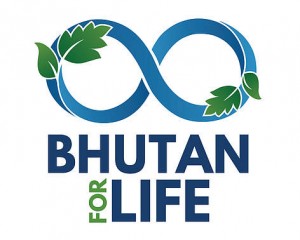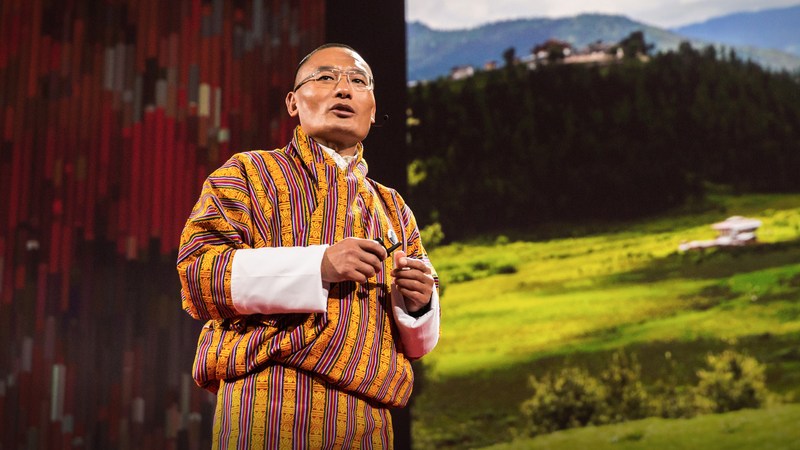Yesterday I listened to a story about a country that kept their promise to become carbon neutral. The Ted Talk titled ‘This country isn’t just carbon neutral – it’s carbon negative’ was delivered by Bhutan’s Prime Minister Tshering Tobgay and he shares with his audience the incredible story of a little nation that did big things for the environment.
Bhutan is a small country located between 2 of the most populated and industrialized nations, China and India.

Since 1971 the country has rejected Gross Domestic Product (GDP) as the only way to measure their progress. Instead there is a new approach to development which measures the prosperity of the nation through formal principles of the Gross National Happiness (as introduced by His Majesty Jigme Singye Wangchuck, the Fourth King of Bhutan) and the physical, spiritual, social and environmental well-being of its citizens and natural environment. Like in our country, Bhutan too has free education and free health-care.
General elections were held in Bhutan for the 1st time in 2008. During the same year, the King ratified the country’s first ever constitution. What’s great about this constitution is that it requires at least 60% of the land to be under forest cover at all times. Today over 72% of the country is under forest cover and it is one of the few remaining global biodiversity hotspots in the world.

Today Bhutan isn’t just carbon neutral, it’s carbon negative. For those of you who’re wondering what this means let me give you a brief explanation. An entity achieves carbon neutrality when their net greenhouse gas emissions is zero. Simply put, the amount released is equal to the amount sequestered/offset. Being carbon negative means that the entity sequesters more than it emits, invariably making it a carbon sink.
Bhutan generates 2.2 million tons of CO2 each year, but their forests sequester more than 3 times this amount, making them a carbon sink for over 4 million tons of CO2. It doesn’t stop there. Bhutan exports most of the renewable energy generated from fast-flowing rivers which offsets about 6 million tons of CO2 in the neighbouring region.
In spite of being a carbon negative country, Bhutan is affected by climate change. The glaciers in Bhutan are melting leading to flash floods and landslides. Prime Minister Tshering Tobgay says “My country and my people have done nothing to contribute to global warming but we are already bearing the brunt of its consequences. And for a small, poor country, one that is landlocked and mountainous, it is very difficult. But we are not going to sit on our hands doing nothing. We will fight climate change. That’s why we have promised to remain carbon neutral.”

http://www.tourism.gov.bt/contact/taktsang-lhakhang-2
Bhutan first pledged to become carbon neutral at COP15 held in Copenhagen in 2009 and it went unnoticed. At COP21 held last year in Paris, they reiterated their promise to remain carbon neutral for life and this time they were heard. As far as Bhutan is concerned, they are determined to keep their word in remaining carbon neutral. Bhutan provides free electricity to their rural farmers so that they won’t have to use firewood. They’re investing in sustainable transport and subsidizing the purchase of electric vehicles and the cost of LED lights. They have also launched nationwide campaigns such as Clean Bhutan – to manage their waste – and Green Bhutan – to plant trees.
More than half the country’s land has been declared as protected areas such as National Parks, Nature Reserves and Wildlife Sanctuaries. They’re connected through biological corridors allowing their wild fauna to roam throughout the country. These conservation efforts are expensive. Bhutan For Life is a funding mechanism to facilitate all conservation programmes in the country. A transition fund will be raised from individual donors and organizations, but the deal will only be closed once the predetermined conditions are met and all funds are committed. Once the deal is closed the transition fund will be used for the conservation efforts for a period of 15 years. This is the time needed for the government to fully fund the conservation measures on their own.

Bhutan’s story is of an endless love for Mother Nature. It is also about selflessness, keeping one’s promises and getting one’s priorities right. Their story moved me to tears. Tears of joy in knowing that places like Bhutan can give us hope in this struggle against climate change; tears of sorrow in wondering about how little we have done as individuals, as a nation.
There are many things to learn from Bhutan. And there is nothing superficial about it as they’ve shown the rest of the world that it is possible to be not only carbon neutral but also carbon negative! If you have 20 minutes to spare, listen to their story. It will get you thinking.
Bhutan may be a small nation but they are a HUGE inspiration to all of mankind 🙂
References:
http://www.theguardian.com/world/2012/dec/01/bhutan-wealth-happiness-counts
http://www.wwfbhutan.org.bt/bhutan_for_life/
http://www.worldwildlife.org/projects/bhutan-committed-to-conservation

